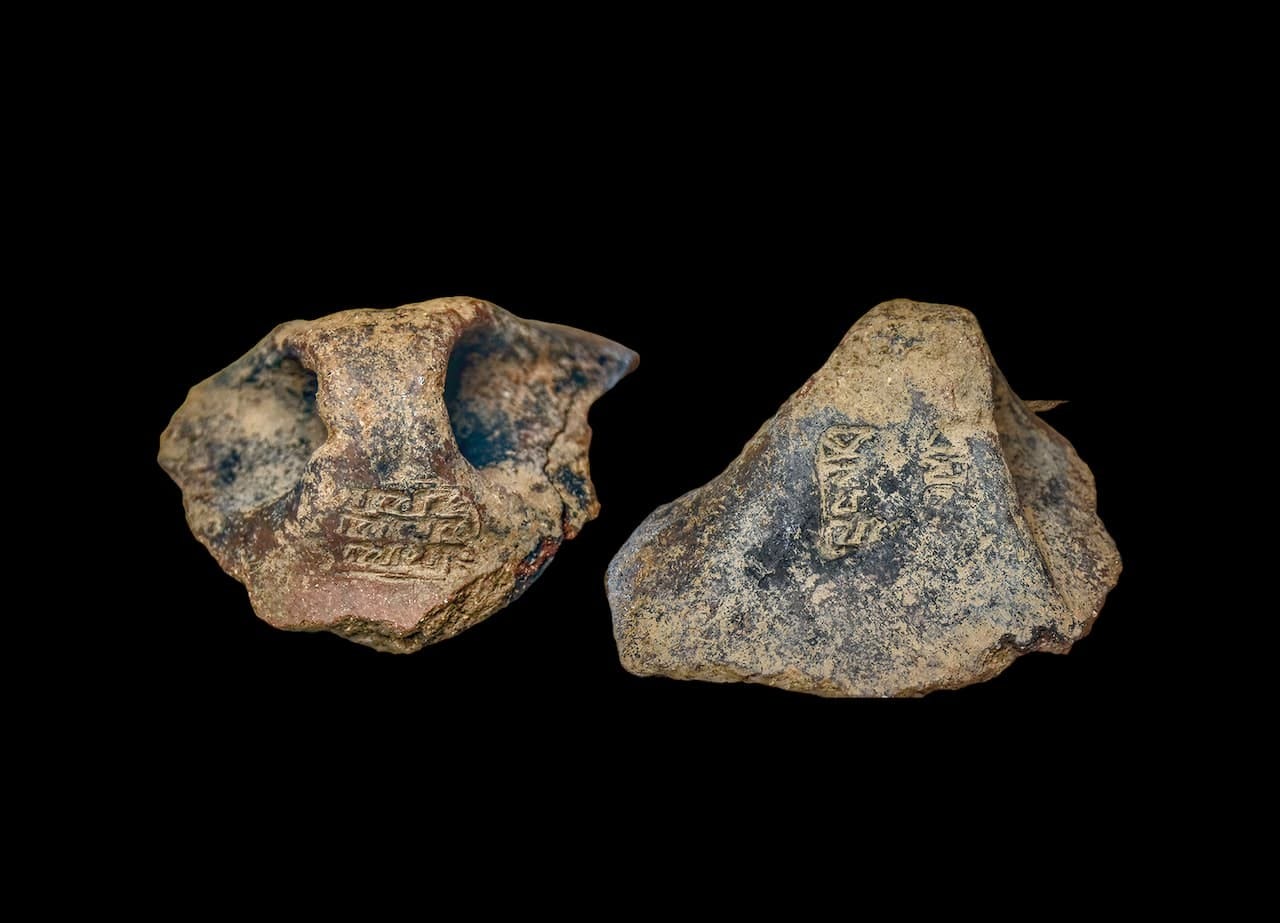Archaeological breakthrough in the Aegean rewrites history
Mysterious Seals from Therasia Could Change the History of Writing
Original article: enikos.gr
An important finding that sheds light on the earliest stages of the creation of writing in the prehistoric Aegean was uncovered during the excavation conducted by the Ionian University, the University of Crete, and the Cyclades Ephorate of Antiquities at the prehistoric settlement of Koimisi in Therasia island.
The study was published under an open access license by Cambridge University Press, in an article by K. Sbonias, I. Tzachilis, and G. Kordatzakis.
At the settlement of Koimisi in Therasia, a large storage jar was found with two different seal impressions on its handle, named THS.1 and THS.2. These sealings were made before the vessel was fired, using clay from Naxos, which indicates commercial or cultural contacts between the islands, as well as the emergence of early writing during the Early Cycladic II period (2700–2300 BCE).
Researcher Minás Tsikritsis referred to the above and correlated the writing on these two new finds with Cretan Hieroglyphic and Linear A, noting that they represent an early form of these scripts since the two seals date to the middle of the 3rd millennium BCE. He also connected these new discoveries with research presented two years ago titled “Symbols of Minoan Hieroglyphs and Linear A from Milos in the middle of the 3rd millennium BCE,” undertaken by Dr. Minás Tsikritsis, Researcher of Aegean scripts, and Dr. Adamantios Sampson, Archaeologist and Professor.
As stated in a report hosted on the Ionian University website, summarizing the research results of K. Sbonias, I. Tzachilis, and G. Kordatzakis, and republished by the Athens-Macedonian News Agency (AME-MPE) with the consent of Professor K. Sbonias:
“These are two seal impressions on the handle of a vessel, originating from a room in the settlement dated to the middle of the 3rd millennium BCE (Early Cycladic II period). The first seal impression (THS.1), located on the upper part of the handle, comes from a three-sided seal with elongated surfaces, decorated with a series of abstract and schematic symbols arranged in a juxtaposed sequence. These successive marks, placed in a coherent order, constitute the earliest testimony of developments connected to the emergence of writing in the Aegean region. The second seal impression (THS.2), featuring linear and meander decorative motifs, falls within the broader tradition of Aegean glyptic art.”
The report further states that “the first organized writing systems appear in Minoan Crete at the beginning of the 2nd millennium BCE (Cretan Hieroglyphic and Linear A). The THS.1 seal from Koimisi may represent an initial stage in the development of a more complex communication system, grounded in the socio-economic and cultural practices of the Aegean during the Early Bronze Age. Seals impressed on ceramics before firing could have indicated the maker, origin, or content of the vessel. The symbols on the Therasia seal may depict names or broader conceptual schemes at an early stage of writing development.”

The Ionian University publication further emphasizes that “based on the results of the petrographic analysis of the ceramic shard by Dr. G. Kordatzakis, postdoctoral researcher at the Department of History of the Ionian University, Naxos — which maintained strong connections with Santorini — is considered the most probable source of both the raw materials used for the manufacture of the vessel and, possibly, the origin of the vessel itself and the seal impressions on its handle.
The significance of the impressions should be interpreted within the broader network of maritime exchanges in the Aegean, through which vessels and goods circulated. The Therasia seal reinforces the idea that the creation of complex communication systems was already underway in the Aegean, in connection with identity declaration, goods control, and increasing social complexity — features characteristic of the ‘proto-urban societies’ of the Early Bronze Age. The symbols of the seals from the Koimisi settlement in Therasia represent a hitherto unknown step in the path toward the development of writing in the prehistoric Aegean.”
Professor K. Sbonias stated to the Athens-Macedonian News Agency (AME-MPE) that the symbols on the Therasia seal, despite some isolated similarities of certain signs with those of the so-called “Archanes Script” and with Cretan Hieroglyphic, do not belong to any known system of Aegean scripts, nor are they genetically linked to the later Cretan scripts. “They attest to the advanced civilization in the Aegean region in the middle of the 3rd millennium BCE and illuminate the use of seals as the oldest means associated with the emergence of early writing in the Aegean, steps that would crystallize a few centuries later in Minoan Crete,” he emphasizes.
The prehistoric settlement at the site Koimisi in Therasia, whose excavation is conducted by the Ionian University in collaboration with the University of Crete and the Cyclades Ephorate of Antiquities, under the direction of Professor K. Sbonias, Emeritus Professor I. Tzachili, and M. Efstathiou, dates to the 3rd and early 2nd millennium BCE (Early Cycladic and Middle Cycladic periods). “It is located at the southern end of Therasia, and its remains are exceptionally well preserved as they were covered by deposits from the major eruption of the Santorini volcano. Its research provides many new insights into the urban organization of Early Cycladic settlements as well as the transition into the Middle Bronze Age, complementing data from the prehistoric site of Akrotiri, whose earliest layers are buried beneath the buildings of the Late Cycladic town,” Mr. Sbonias notes to AME-MPE.



